Latest NRAO News
News is managed by NRAO News & Public Information. Questions about News? Have a story to share? Want to interview a scientist or create new media about our telescopes?
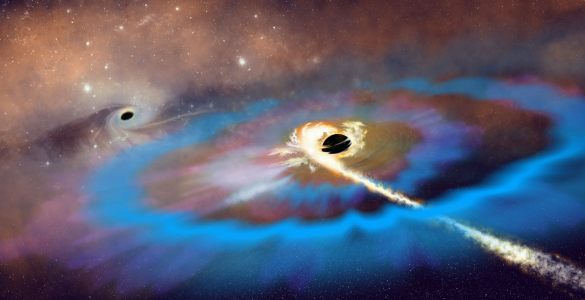
An international team of astronomers has discovered the first radio-bright tidal disruption event (TDE) occurring outside a galaxy’s center using the U.S. National Science Foundation National Radio Astronomy Observatory (NSF NRAO) Very Large Array (NSF VLA) and Atacama Large Millimeter/submillimeter Array (ALMA), along with several partner telescopes,. The event, designated AT 2024tvd, revealed the fastest-evolving radio signals ever observed from this type of cosmic catastrophe.
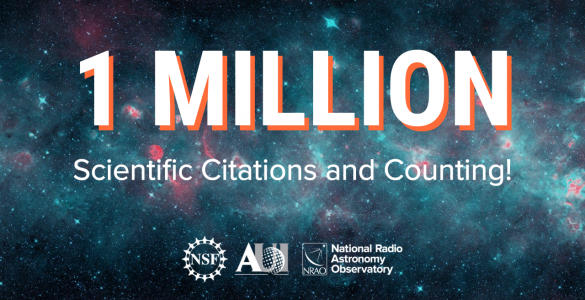
The U.S. National Science Foundation National Radio Astronomy Observatory (NSF NRAO) is celebrating a historic achievement: research using our…
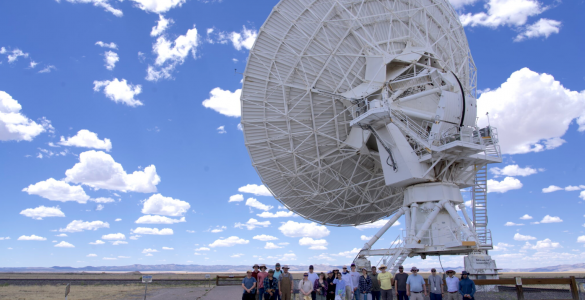
The U. S. National Science Foundation’s National Radio Astronomy Observatory (NSF NRAO) recently collaborated with NSF SpectrumX, the Spectrum Innovation Center, to host a large-scale spectrum research experiment at the U.S. National Science Foundation Very Large Array (NSF VLA) in New Mexico.

Astronomers using the U.S. National Science Foundation’s Very Long Baseline Array (NSF VLBA) and U.S. National Science Foundation’s Very Large Array (NSF VLA) have caught a supermassive black hole in the act of awakening from a long slumber, providing an unprecedented glimpse into the earliest stages of black hole activity.
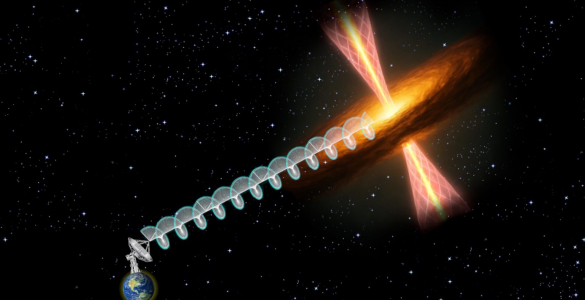
An international team, led by astronomers from the Indian Institute of Space Science and Technology (IIST) and the Indian Institute of Science (IISc), has for the first time detected circular polarization in radio emission originating from a massive protostar, IRAS 18162-2048—unveiling fresh clues about the cosmic forces shaping our universe.
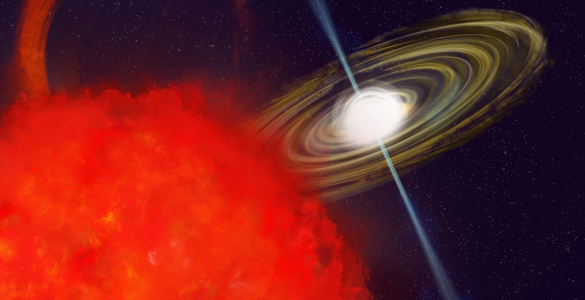
Astronomers have made a groundbreaking discovery using some of the world’s most advanced radio telescopes. Researchers, led by Fengqiu Adam Dong, a Jansky Fellow at the NSF Green Bank Observatory (NSF GBO), have identified an exceptionally unusual cosmic object known as a Long Period Radio Transient (LPT), named CHIME J1634+44. This object stands out as one of the most polarized LPTs ever discovered, and it is the only one observed to be spinning up (meaning its rotation is speeding up) a phenomenon never seen before in this class of astronomical objects.
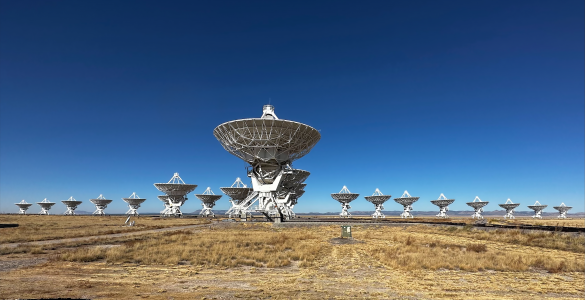
The U.S. National Science Foundation National Radio Astronomy Observatory (NSF NRAO) is proud to announce a significant milestone in advancing STEAM education in rural New Mexico. This achievement is the result of dedicated advocacy by Socorro County and Associated Universities, Inc., whose efforts—combined with bipartisan support from state legislators and Governor Michelle Lujan Grisham—have secured $1.78 million in capital outlay funding for the Next Generation Learning Center at the U.S. National Science Foundation Very Large Array in Socorro County.
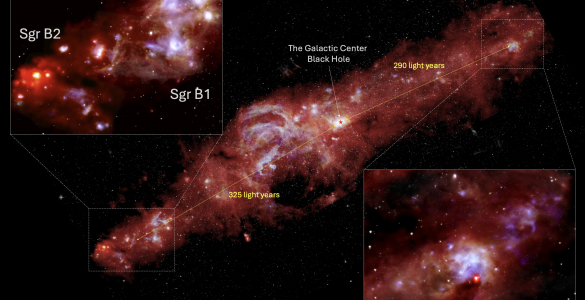
New research led by Dr. James De Buizer at the SETI Institute and Dr. Wanggi Lim at IPAC at Caltech revealed surprising results about the rate at which high-mass stars form in the galactic center of the Milky Way.
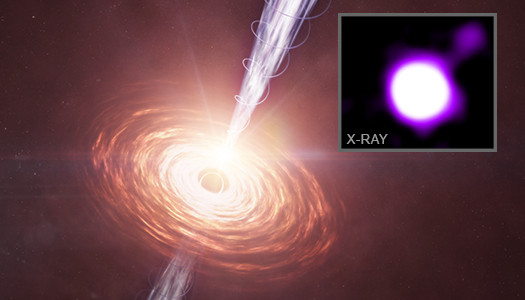
Astronomers used Chandra and the U.S. National Science Foundation Karl G. Jansky Very Large Array (NSF VLA) to study this black hole and its jet at a period they call “cosmic noon,” which occurred about three billion years after the universe began.

By observing the young star HW2 in Cepheus A, located 2300 light years from Earth, researchers have resolved the structure and dynamics of an accretion disk feeding material to this massive star. This finding sheds light on a central question in astrophysics: how do massive stars, which often end their lives as supernovae, accumulate their immense mass?





